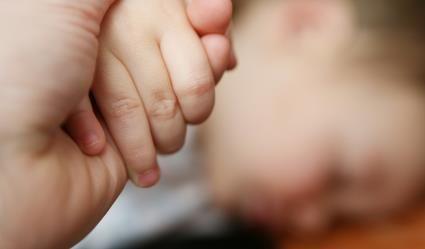Exstrophy refers to a number of congenital abnormalities that affect the formation of the urinary and genital tracts, the muscles and bones of the pelvis and abdomen, and sometimes the intestinal tract. Most often, the bladder is involved, with the organ resting outside of the body on the abdomen. In other instances, the pelvic bones are greatly separated, and the lower section of the urinary tract may also be compressed and exposed. The genitals can also have an abnormal formation. Defects of the bone, muscles, fascia (fibrous tissue), genitals, urinary tract, and gastrointestinal tract are all associated anomalies.
Types of Exstrophy Disorders
Classic bladder exstrophy
Bladder exstrophy occurs in 3.3 out of 100,000 births and affects the bladder, urethra (the tube that carries urine from the bladder), muscles and bones of the pelvis, and the genitals. In some instances, problems with the spinal cord may also be present, as is the case with spina bifida occulta, in which parts of the vertebrae around the spinal cord don’t fully form.
With this type of exstophy, the bladder is flattened instead of being its usual round shape. The bladder is also exposed outside the belly through a hole in the abdomen. Because the urethra has not formed correctly, urine flows through the opening in the belly rather than through the urethra.
Epispadias
Epispadias happens when the bladder is formed normally, but the urethra doesn’t form a complete tube and it exits the body in the wrong place. In male infants with epispadias (1 out of 117,000 births), the urethra opens on the side or top of the penis, rather than the tip. Sometimes the tube opens along the entire length of the penis. In females (1 out of 484,000 births), the opening of the urethra can be between the clitoris and labia, or in the area of the belly.
Cloacal exstrophy
Cloacal exstrophy occurs in 1 out of 200,000-400,000 births and affects the urethra, bladder, genitals, and the intestines. The bladder and part of the intestines are located outside the body. In males with this condition, the penis is flat and short, or split. In females, the clitoris is split, and sometimes there may be two vaginal openings. The intestine will also be shortened and the anus may not be open. Other conditions may also be present, such as spina bifida occulta, omphalocele (a defect in the abdominal wall near the abdomen), or kidney abnormalities.
Exstrophy Causes
The exact cause of exstrophy is unknown, but doctors do know that the problem occurs during fetal development. It is suggested that it may be due to the way the tissues around the bladder and rectum develop while the fetus in the womb.
During early development, the bladder and the rectum are enclosed in a layer of tissue, the cloacal membrane. Normally, the rectum separates from the bladder and some of this tissue moves over the bladder. If the tissue doesn’t migrate properly, the cloacal membrane (which forms the muscles of the belly) can rupture, causing the bladder to protrude into the abdominal wall and become exposed. Children whose parent had exstrophy have a 1 in 70 chance of also being born with it.
Exstrophy Diagnosis
Exstrophy can be diagnosed before birth during a routine ultrasound that looks for malformations and growths.
If no anomalies are identified on ultrasound, they will be obvious at birth due to the bladder being exposed outside the belly or the genitals being abnormal.
When a child is born with this condition, doctors will perform the following:
- Kidney ultrasound to see if the organ has sustained damage
- Spinal ultrasound or MRI to look for problems with the spinal cord
- Voiding cystourethrography to check the capacity of the bladder and to look for vesicoureteral reflux (urine reverses course, moving from the bladder back into the ureters and kidneys)
Exstrophy Treatment
Exstrophy treatment requires surgery. The exact method used will depend upon the surgeon and the extent of the abnormalities.
References
Elder JS. (2011). Anomalies of the bladder. Nelson Textbook of Pediatrics. 19th ed.
Gearhart JP, Mathews R. (2011). Exstrophy-epispadias complex. Campbell-Walsh Urology. 10th ed.
Jayachandran D, Bythell M, Platt MW, et al. (2011). Register based study of bladder exstrophy-epispadias complex: prevalence, associated anomalies, prenatal diagnosis and survival. J Urol. 186(5):2056-60.
Gambhir L, Höller T, Müller M, et al. (2008). Epidemiological survey of 214 families with bladder exstrophy-epispadias complex. J Urol. 179(4):1539-43.
Stein R, Hohenfellner K, Fisch M, et al. (1996). Social integration, sexual behavior and fertility in patients with bladder exstrophy--a long-term follow up. Eur J Pediatr. 155(8):678-83.


